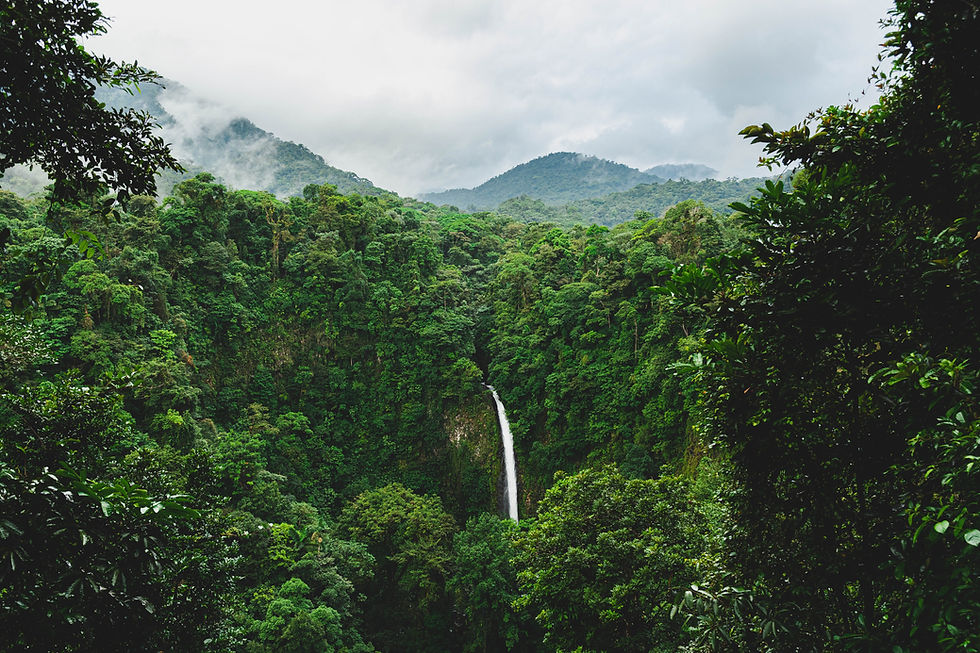Designing for the Tropics: Key Principles and Practices
- Myron Garita
- Jan 4
- 2 min read
Updated: Jan 20
The lush, vibrant environment of Costa Rica provides a stunning backdrop for architectural innovation. At NavaStudio, we have embraced the challenges and opportunities of designing for the tropics, creating spaces that are not only visually striking but also sustainable and comfortable. In this post, we explore the fundamental principles of tropical architecture and how we integrate them into our designs.

1. Passive Cooling
Tropical climates are known for their high temperatures and humidity, making passive cooling an essential element of architectural design. This approach minimizes the need for mechanical air conditioning, reducing energy consumption and promoting sustainability. At NavaStudio, we achieve passive cooling through:
Orientation and Layout: We carefully position buildings to optimize airflow and minimize direct sunlight exposure. Strategic placement of windows, doors, and open spaces allows for natural cross-ventilation.
Shading Devices: Features like overhangs, louvers, and pergolas protect interiors from the intense tropical sun while maintaining a connection to the outdoors.
Thermal Mass Materials: Using materials with high thermal mass, such as concrete or clay, helps regulate indoor temperatures by absorbing and releasing heat gradually.
2. Natural Ventilation
Harnessing the power of natural ventilation is another cornerstone of tropical architecture. By designing spaces that encourage air movement, we create a refreshing and comfortable indoor environment. Our strategies include:
Stack Effect: Incorporating high ceilings and vents allows warm air to rise and escape, drawing in cooler air from below.
Operable Windows: Large, adjustable windows provide flexibility to control airflow as needed.
Breezeways: Open corridors and interconnected spaces facilitate the seamless flow of air throughout a building.
3. Use of Local Materials
Sourcing materials locally is a sustainable practice that also enhances the authenticity of our designs. In Costa Rica, we work with:
Teak and Bamboo: These renewable resources are not only abundant but also durable and visually appealing.
Stone and Clay: Locally sourced stone and clay tiles add texture and character to our projects while blending harmoniously with the natural surroundings.
Recycled Materials: Incorporating reclaimed wood or repurposed elements reduces waste and adds a unique story to each design.
How NavaStudio Brings It All Together
At NavaStudio, our commitment to tropical architecture goes beyond aesthetic considerations. We believe in creating spaces that:
Respect the Environment: By working with, rather than against, the natural landscape, our designs preserve biodiversity and minimize ecological impact.
Enhance Comfort: Thoughtful integration of passive cooling, natural ventilation, and local materials ensures that our spaces remain pleasant and functional year-round.
Celebrate Local Culture: By drawing inspiration from traditional Costa Rican architecture, we honor the rich heritage of the region while innovating for modern lifestyles.
Conclusion
Designing for the tropics is both an art and a science. At NavaStudio, we embrace the unique challenges of Costa Rica’s climate to create spaces that are sustainable, functional, and deeply connected to their environment. Through passive cooling, natural ventilation, and the use of local materials, we craft designs that not only stand the test of time but also inspire a profound appreciation for the tropical landscape.
Interested in learning more or starting a project with us? Visit navastudiocr.com to explore our portfolio and get in touch.


Comments